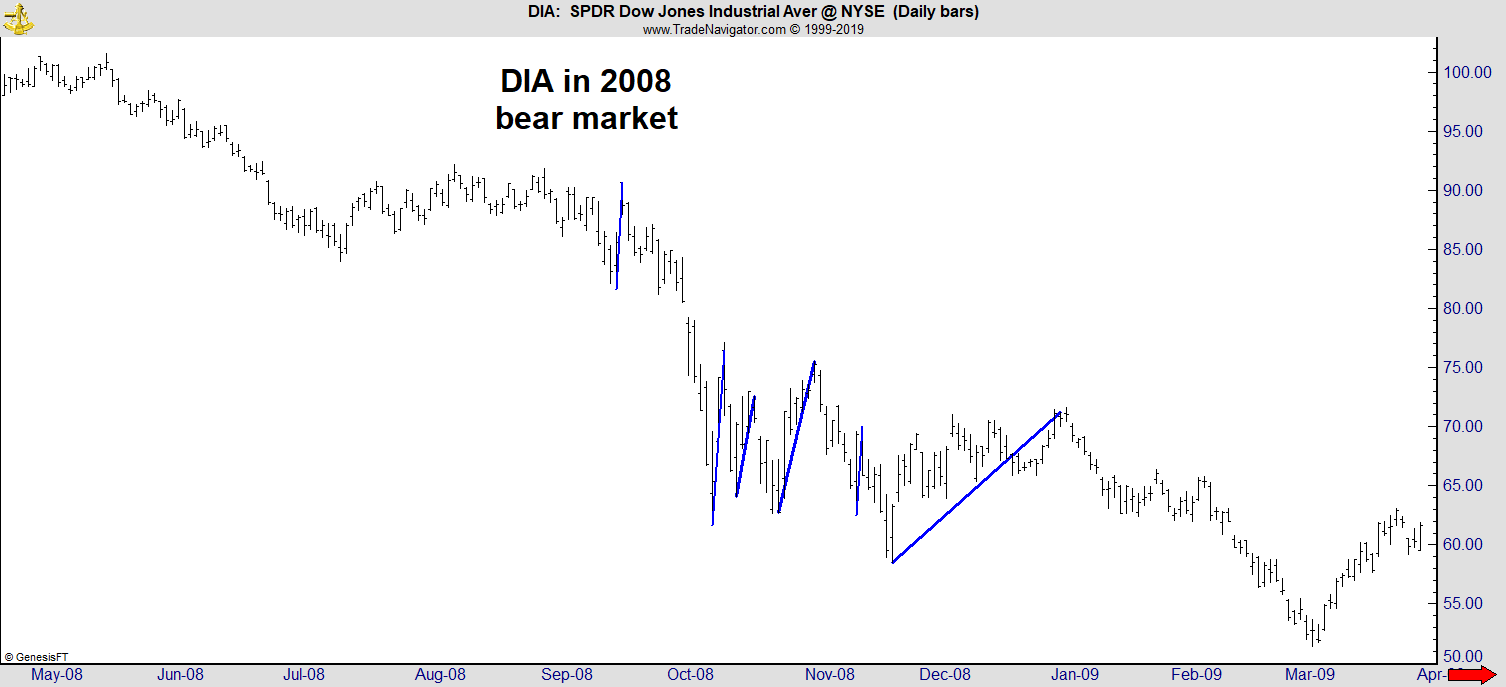After falling sharply for three months, stocks rallied.
Over the next three weeks, the Dow Jones Industrial Average regained almost half of the points lost in that brutal decline.
Many investors believed the bear market was over.
That sounds a lot like the current market. And it is a summary of the current market.
But it’s also a summary of events in November 2008.
The Start of a Bull Market?
The bear market accelerated in the days after President Barack Obama’s election.
But then prices rallied. The Dow gained more than 20%.
Many analysts believed the new administration would bring new policies that would lead to economic growth. After a 20% gain, they believed the bear market was over.
While a 20% gain after a decline is the definition most analysts use to declare the start of a bull market, they were wrong.
That 20% gain was just a volatile bear-market rally.
In the last few weeks of that year, the Dow was able to gain more than 20% on two separate occasions.
Although pundits declared the end of the bear market each time, investors faced large losses.
By the time the bear market ended in March 2009, the Dow dropped another 30%.
The bear-market decline totaled 52%. But prices didn’t move straight down. There were five rallies of at least 10% that interrupted the downtrend.
Volatile Bear Market Rallies
The chart below shows those rallies in the SPDR Dow Jones Industrial Average ETF (NYSE: DIA), an exchange-traded fund that allows investors to trade the index. Solid blue lines mark gains of at least 10%.

Three of those rallies lasted less than one week. That demonstrates how volatile bear markets are.
Volatility is an inescapable part of bear markets. One reason is because many hedge funds use leveraged or borrowed money.
For example, a fund might have $1 billion in assets and a portfolio valued at $4 billion. If the positions lose 10% of their value, the fund now has losses of $400 million.
With assets down to just $600 million, lenders will ask the fund to put up more collateral.
If the fund doesn’t have collateral available — and most funds won’t have extra cash to put up — the manager will have to sell. By selling, they can repay part of the loan.
That process partly explains why prices fall so quickly. These requests for collateral force funds to sell, and their selling creates the decline in the market.
After the selling is over, longer-term investors spot bargains and buy. Their buying creates the sharp rallies that often follow rapid declines.
However, these rallies are short-lived until the fundamentals improve.
In the current market, the fundamental factors driving the downtrend include:
- High valuations.
- Reduced earnings growth.
- A slowing global economy.
- And declining sentiment associated with uncertainty resulting from political turmoil in the U.S., the United Kingdom, France and several other countries.
Until some of those factors change, the bears are in control of the market.
Regards,

Michael Carr, CMT, CFTe
Editor, Peak Velocity Trader









